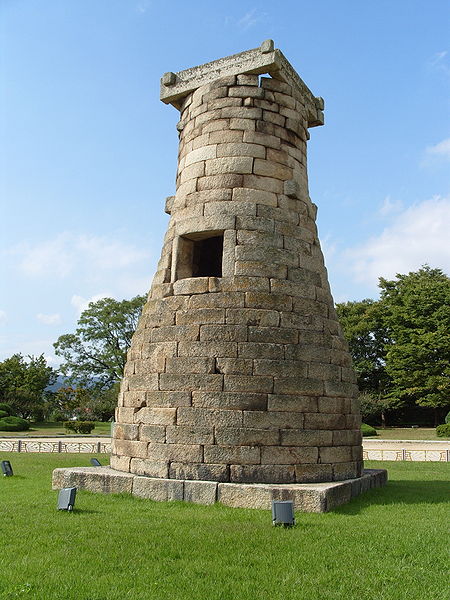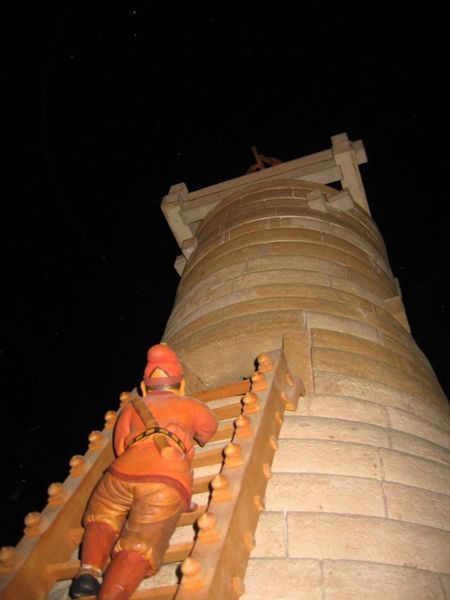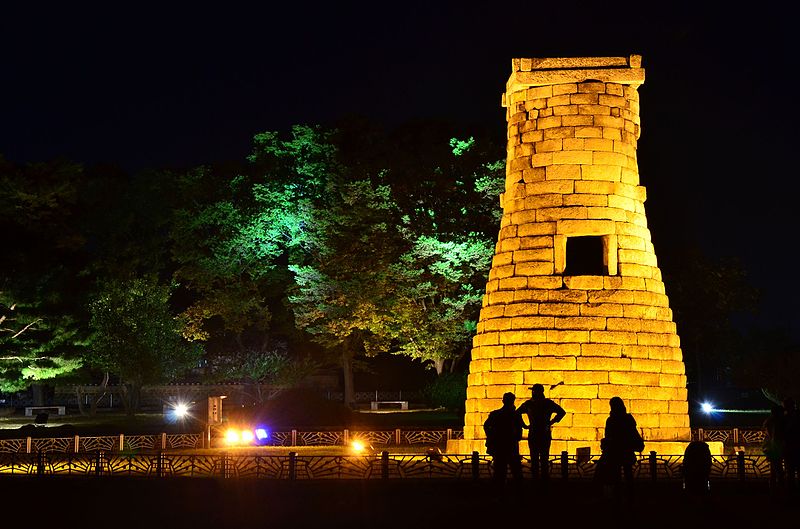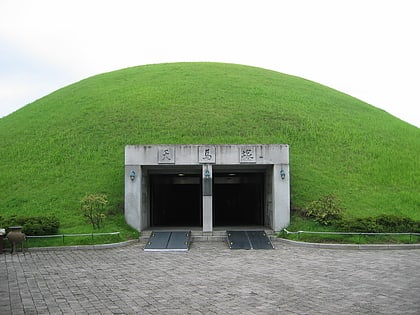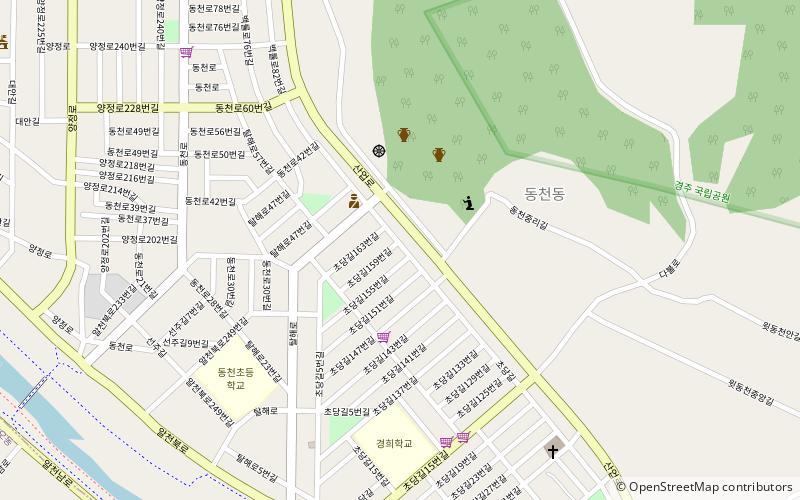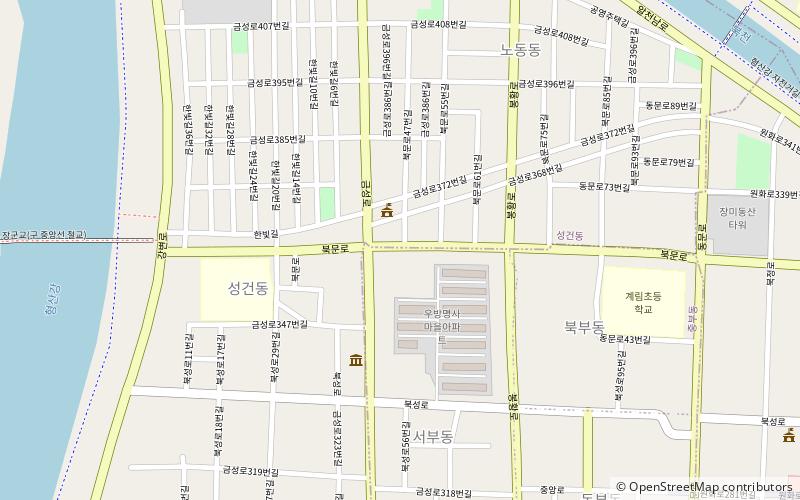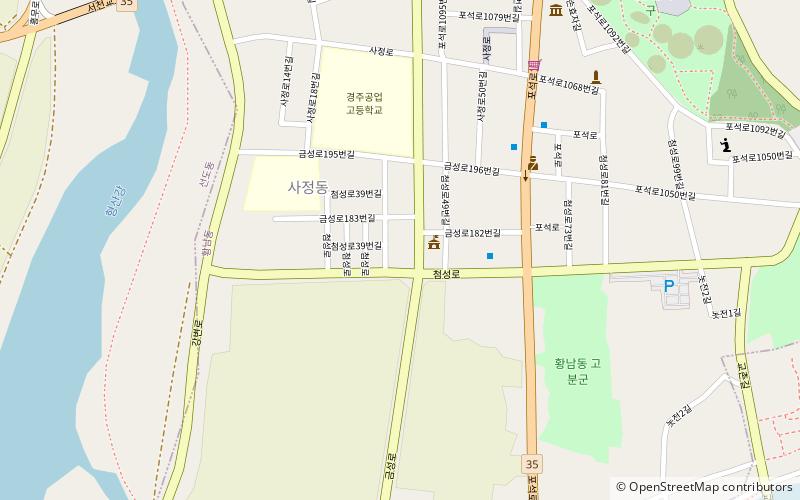Cheomseongdae, Gyeongju
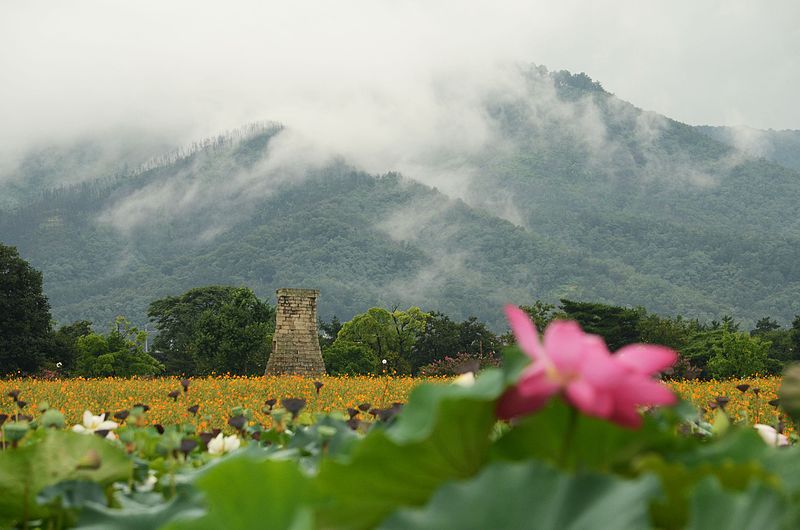
Facts and practical information
Cheomseongdae Observatory is a testament to the advanced astronomical knowledge and architectural prowess of the Silla Dynasty, located in the historic city of Gyeongju, South Korea. Constructed in the 7th century, Cheomseongdae stands as the oldest surviving astronomical observatory in East Asia, and is a significant cultural landmark for both South Korea and the field of astronomy.
This remarkable stone structure measures 9.17 meters in height and consists of 362 stones, which some scholars believe correspond to the number of days in a lunar year. Its cylindrical shape, with a square base, is a unique combination of form and function, symbolizing the union of heaven and earth. The observatory was used by Silla scientists to observe the stars and planets to forecast the weather, a practice which was crucial for agricultural planning and understanding the cosmos.
The name 'Cheomseongdae' translates to 'star-gazing tower,' and it is a fitting moniker for this ancient planetarium. The observatory is made up of a narrow, square opening at the top, which allowed observers to view the sky, and an interior staircase that leads to the observation deck. The structure is a reflection of the Silla Kingdom's dedication to science and technology, as well as their reverence for the heavens.
Today, Cheomseongdae is recognized as National Treasure No. 31 of South Korea and continues to attract visitors from around the world. It is a symbol of Gyeongju's rich history as the capital of the Silla Kingdom, and a fascinating site for those interested in astronomy and ancient Korean culture.
Gyeongju
Cheomseongdae – popular in the area (distance from the attraction)
Nearby attractions include: Gyeongju National Museum, Anapji Pond, Bunhwangsa, Seongdong Market.
Frequently Asked Questions (FAQ)
Which popular attractions are close to Cheomseongdae?
How to get to Cheomseongdae by public transport?
Bus
- Bus to Mt. Namsan (17 min walk)
- Gyeongju Express Bus Terminal (27 min walk)


